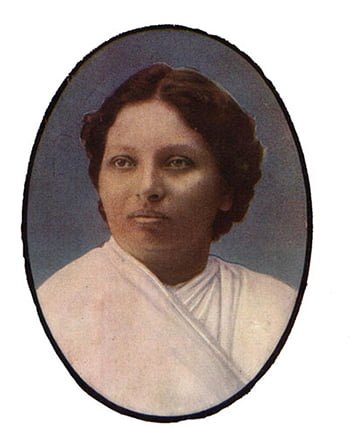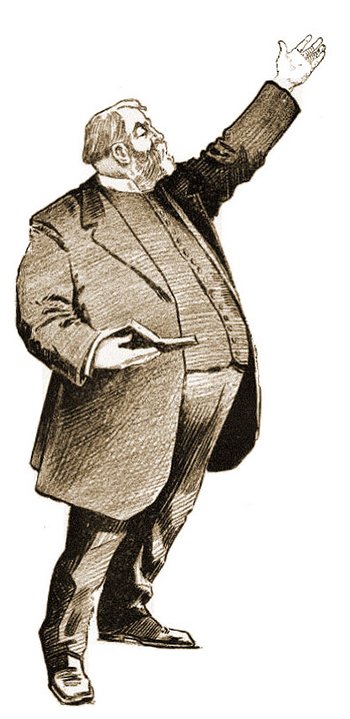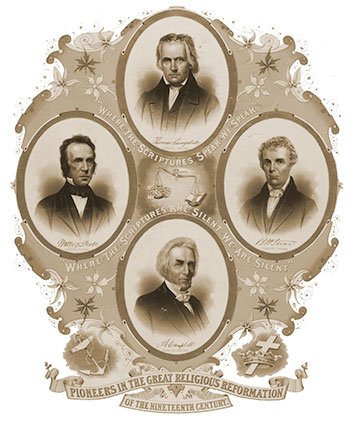1905 The Mukti Revival
June 30 – Pandita Ramabai

Pandita Ramabai
Honored with the title Pandita by the Sanskrit scholars of Calcutta University, Ramabai became a Christian by the turn of the century. She mastered seven languages, translated the Bible into Marathi, and published several books including A Life of Christ. The Indian government issued a postage stamp in her honor in 1989, recognizing her social impact on the nation.
Ramabai established a compound for child widows and orphan girls during severe famine in her area near Pune (Poona) just south of Bombay. She called it Mukti (“salvation”). By 1901 she had 2,000 girls and women, and from January 1905 she began teaching about the need for revival. Soon over 500 people, mostly women and girls, met twice daily to pray for revival.
Ramabai heard about early moves of the Spirit in northeast India and challenged her women to leave secular studies for a time to go into the villages to preach in teams. Thirty volunteered. They met daily to pray for the endowment of the Holy Spirit.
On June 29, 1905, the Spirit moved on many of the girls. The girls saw flames engulfing one of the girls, so they raced to get a bucket of water, only to discover she was not being burned.
Then on Friday, June 30, while Ramabai taught about Jesus’ love for a despised woman caught in adultery from John 8, the Holy Spirit suddenly fell on them all with great power. Everyone there began to weep and pray aloud, crying out to be baptized with the Holy Spirit and fire. One 12-year-old girl, who was normally very plain in physical appearance, became radiantly beautiful and laughed constantly. Others had visions of Jesus.
The Mukti Revival Spreads
Revival spread through their mission and into many surrounding areas. Regular school activities gave way to confession, repentance, and great joy with much praise and dancing. Many were baptized in the Spirit, spoke in tongues, and were filled with zeal for evangelism and social care.
During that time a missionary, Albert Norton, visited the mission. Minnie Abrams, one of the teachers there, invited him to observe a revival prayer group in the school. He later reported the following impressions of that experience:
One week ago I visited the Mukti Mission. Miss Abrams asked me if I should like to go into a room where about twenty girls were praying. After entering, I knelt with closed eyes by a table on one side. Presently I heard someone praying near me very distinctly in English. Among the petitions were, “O Lord, open the mouth; O Lord, open the mouth; O Lord, open the heart; O Lord, open the eyes! O Lord, open the eyes! Oh, the blood of Jesus, the blood of Jesus! Oh, give complete victory! Oh, such a blessing! Oh, such glory!”
I was struck with astonishment, as I knew that there was no one in the room who could speak English, beside Miss Abrams. I opened my eyes and within three feet of me, on her knees, with closed eyes and raised hands was a woman, whom I had baptised at Kedgaon in 1899, and whom my wife and I had known intimately since as a devoted Christian worker. Her mother tongue was Marathi, and she could speak a little
Hindustani. But she was unable to speak or understand English such as she was using. But when I heard her speak English idiomatically, distinctly, and fluently, I was impressed as I should have been had I seen one, whom I knew to be dead, raised to life. A few other illiterate Marathi women and girls were speaking in English and some were speaking in other languages which none at Kedagaon understood. This was not gibberish, but it closely resembled the speaking of foreign languages to which I had listened but did not understand….
Quite a number had received the ability to speak in English, a language before unknown to them. Just why God enabled those women and girls to speak in English, instead of Tamil, Bengail, Tugulu, or some other language of India, unknown to them, I cannot say. But I have an idea that it is in mercy to us poor missionaries from Europe and America who, as a class, seem to be Doubting Thomases, in regard to the gifts and workings of the Spirit, and are not receiving the power of the Holy Ghost as we ought (Frodsham 1946, 107–108).
That powerful revival spread throughout many areas of India, with both Christians and unbelievers repenting in large numbers and being filled with the Holy Spirit and the fire of God.
Revival spread to southern India where Amy Carmichael at Dohnavur among the Tamils had been praying and longing for a visitation of the Spirit of God. In October 1905, the Spirit moved upon the people so powerfully they could neither preach nor pray aloud. They broke down weeping. Amy Carmichael wrote:
It was so startling and so awful.
…Soon the whole upper half of the church was on its face on the floor crying to God, each boy and girl, man and woman, oblivious of all others. The sound was like the sound of waves of strong wind in the trees. No separate voice could be heard. …I had never heard of such a thing as this among Tamil people. Up in the north, of course, one knew that it had happened, but our Tamils are so stolid, so unemotional I had never imagined such a thing as this occurring” (Duewel 1995,230).
Earlier that year, before the Mukti revival began, a revival spark had stirred in Assam, in northeast India, but it took much longer to ignite and did not spread with the intensity of the western fires. From the beginning of 1905, the Khasi hill-tribe Christians met every night to pray for revival for over 18 months. Their Welsh Presbyterian missionaries had brought news of revival in Wales that stirred them to earnest prayer. Those nightly meetings often went past 10 p.m.
One Sunday, March 4, 1906, the Bible teaching concerning the baptism of the Spirit stirred the people deeply. The Christians felt an unusual sense of the Spirit’s Presence, which produced prolonged prayer, weeping, and praise. Gradually revival spread through the presbytery with powerful messages from Khasi preachers and widespread repentance.
The Baptists also reported remarkable awakenings along the wide Brahmaputra River valley. Revival spread through 1907 into all the churches of the Brahmaputra, then south into the Naga hills and then on to the Mizo tribe further south. A pagan anti-revival movement flared in 1911–12, but when a plague of rats invaded the area and demolished their food, the people suffered terribly. Refugees poured down into the plains where Christians shared their food and cared for them. So the pagan revival died out and then in 1913 and again in 1919 greater revivals of Christianity ignited the hills of northeast India.
© Geoff Waugh. Used by permission.
For further research:
The Revival in India
Pandita Ramabai – The Story of her life
On this site:
Mukti Revival



